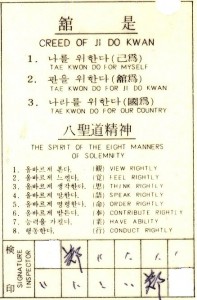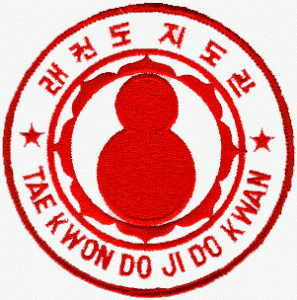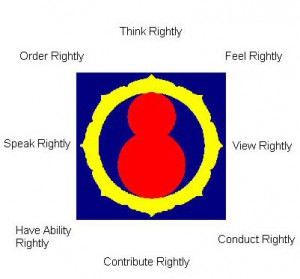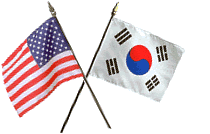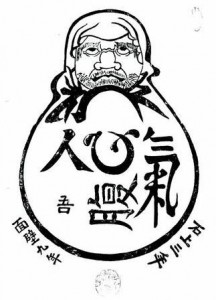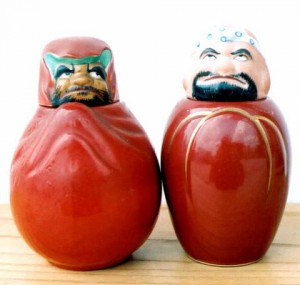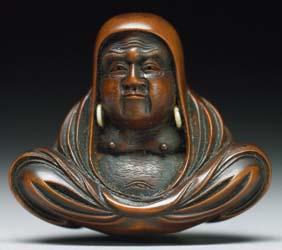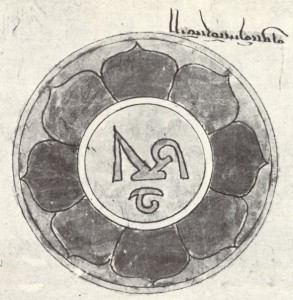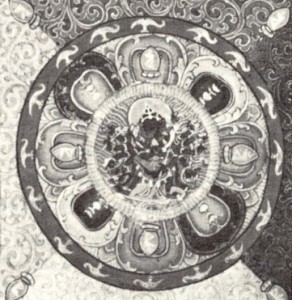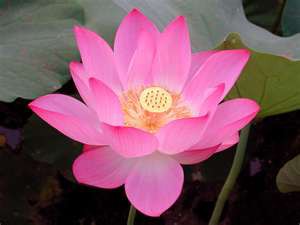Special Thanks!
We’d like to give special thanks and acknowledgement to Grand Master Al Cole, researcher, author and publisher of the website dedicated to the Taekwondo Jidokwan Society, and it’s historical society. Grand Master Al Cole, graciously has allowed us to publish in this site, information collected during his research, investigation and travels to various nations and Korea. Without his valuable groundwork and years of dedication, this page would not be complete.
Jidokwan
Origins and History
“For myself, for the Kwan, for the country”
Jidokwan is one of the original nine schools or Kwans of the modern Korean martial arts that became Taekwondo, and was founded in what is now South Korea at the end of the Second World War. Its name translates as “School of Wisdom”, “The Way of Wisdom” or “The Right Way”.
The Jidokwan in Korea still exists today and it functions as a social fraternal order. Jidokwan supports and endorses the Kukkiwon methodology of Taekwondo, and supports the WTF.
The President of the Jidokwan, Seung Wan Lee was recently elected as the new Kukkiwon President.
Initiative role for the Kwan Unity
For myself, for the Kwan, for the country, based on these three words, Jidokwan was founded on March 3rd of 1946. The Jidokwan was first titled as Cho Sun Yun Moo Kwan Kong Soo Do Bu.
The Cho Sun Yun Moo Kwan first founded by CHUN, Sang Sup, the first grandmaster of Jidokwan.
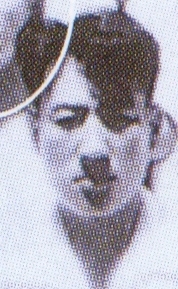
When he was seventeen years old, Chun relocated to Japan to attend College at Dong Yang Chuck Sik (Takushoku) University in Japan, where he mastered Shotokan Karate under Gichin Funakoshi. Upon his return to his native Korea, he began teaching the Karate that he had learned in Japan at the Chosun Yun Moo Kwan school of Judo. This was one of the few martial art schools that the Japanese occupying forces allowed to exist during this period of military occupation. During this time, he had a very close relationship with Byung In Yoon, who studied Chuan-fa in Manchuria and became a Shudokan Karate “Shihan” (Sabum or teacher) under Kanken Tōyama while he studied in Japan.
Chun and Yoon would travel to train with other martial artists, sometimes traveling to Manchuria. They trained with each other so much that they became known as brothers. Yoon taught class at Chun’s Choson Yun Moo Kwan Kong Soo Do Bu for about 6 months before opening his own club called the YMCA Kwon Bop Bu. Yoon’s YMCA club later became the Chang Moo Kwan, which he founded with his most senior student, Nam Suk Lee.
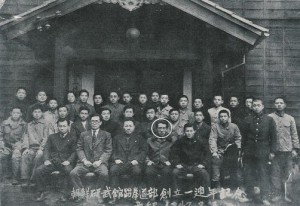
During the Korean War, all schools of martial arts were closed in Korea. This was also the case with the Chosun Yun Moo Kwan. Sang Sup Chun and Byung In Yoon both vanished during the Korean War. Sang Sup Chun has never been heard from since the Korean War. Byung In Yoon died of lung cancer on April 3, 1983 in Cheong-jin City, Ham-Gyoung North Province.
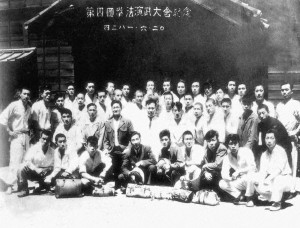
The Jidokwan still exist in Korea today and functions only as a fraternal order which endorses the Kukkiwon system and supports the World Taekwondo Federation.
The Spirit of the Eight Manners Jidokwan of Solemnity
Philosophy
Taekwondo Jidokwan’s philosophy is as follows (as published in the 2006 Jidokwan 60th Anniversary Handbook):
Leadership (Jidoja)
- 1. A leadership imbued with wisdom and refinement.
- 2. A courageous activist who thinks before his action.
- 3. A patriot who is devoted to the welfare of his/her nation.
The objectives of Instructor Education
- 1. To help maintain self-perfection which is respected by the public.
- 2. To help form an avant-garde in organizing national force to stop the aggressors.
- 3. To help achieve ideological innovation in taekwondo spirit.
- 4. To help actively participate in the service to the public for the community development.
- 5. To help foster high hopes and great ambition by encouraging savings.
The Spirit of the Eight Manners of Solemnity
- 1. View Rightly
- 2. Feel Rightly
- 3. Think Rightly
- 4. Speak Rightly
- 5. Order Rightly
- 6. Contribute Rightly
- 7. Have Ability
- 8. Conduct Rightly
Credo of Taekwondo Jidokwan
- 1. Taekwondo for myself.
- 2. Taekwondo for the Jidokwan.
- 3. Taekwondo for our country.
Jidokwan Pledge
- 1. I will observe the rules and absolutely obey the order of Jidokwan.
- 2. I will attain physical and mental discipline in the spirit of Jidokwan.
- 3. I will devote myself to the creation of new tradition and achievement of Jidokwan.
The Ji Do Kwan symbol consists of 3 circles. A circle represents wholeness, since there is no beginning and end. The large outer circle represents the universe. Within the outer circle, the larger circle represents Earth and the smaller circle represents life on earth. All of these circles are interconnected.
The colors red and blue have significance to the meaning of the Ji Do Kwan symbol. Red is the color of energy and power, courage and attention. Blue is for peace, calm and friendship. Placed together they create balance and harmony.
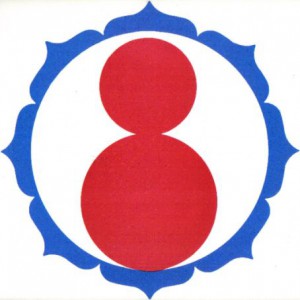
The center figure is a representation of Bodhidarma, also known as Daruma or Tamo.
Japanese folk legend says, that around the fith century, the Dharma was a Buddhist priest. He sat facing a wall in meditation for nine years straight. When he finally try to move to stand up, his arms and legs were too stiff to stand upright. “Nothing can stop the teachings of the Buddha”, the Dharma thought to himself. I must move from village to village, sharing with the people what I have discovered while meditating. Since the Dharma could not stand up and walk, he rolled from village to village, spreading his teachings.
Today, Daruma dolls are used as scarecrows in fields to scare away birds and evil spirits. Daruma dolls are also used as characters in children’s plays and stories.The “wishing” daruma doll has a face that is painted without eyes. One eye is painted on the “wishing” doll when a wish is made. The second eye is painted when the wish is fulfilled.
Darumas come in many sizes – from lifesize (and larger) to dolls no larger than a fingernail. They’re made of many materials and are the creations of many talented artists.
The traditional Daruma figure is a balanced figure that will not stay down if knocked over, it will right itself automatically, similar to the toy we know as Weebles, remember?: “Weebles wobble but they don’t fall down!”. This automatic righting is representative of the Buddhist saying “Seven times down, eight times up”. This is a common saying among early Jidokwan members. The Daruma has become symbolic for optimism, persistence, and strong determination.
Daruma Dolls
A Japanese children’s song about the Daruma doll goes as follows:
Palsungdo or Eight Solemn Ways
The eight outer leaves of the Jidokwan logo
Ancient Hindu 8 leaf Lotus Charm. Contains the divine sound of AUM. Notice the same leaf pattern as the Jidokwan lotus.
Each of the eight lotus leaves which surround the Otugi figure in the Jidokwan logo represents one of the Eight Solemn Ways defined below. This lotus symbol is many thousands of years old and traces back to early symbols found in Northern India. It was later adapted by Buddhist artisans and holds the meaning of the unfolding or enlightened mind.
Tibetan 8 leaf Lotus diagram in center of tantric Mandala (same pattern as Jidokwan lotus), next to a Lotus flower, the inspiration for the symbol.
It also matches the Wheel of Life that represents the Buddha’s discourse at the river Benares in India where he spelled out the Four Noble Truths, of which the Eight Solemn Ways (aka Eight Fold Path) is the forth of those truths.
The Eight Fold Path has three categories and they are Ethical, Mental and Intellectual Discipline:
- Ethical Discipline ( Sila ).
The voluntary control and direction of one’s communications, actions, and contributions. Working toward moral development of one’s self, for the benefit of all beings.- 1. Right Speech ( Samma Vaca ).
Practice being true and courteous in all communications. Aim to promote peace, harmony, and unity. If one has nothing of value to say, one should keep a dignified silence. Practice being considerate in listening, become a student of life. Do not however, waste your consideration and time listening to inappropriate or negative communications.
- 2. Right Action ( Samma Kammo ).
Arises from a clear mind state which must begin with basic wholesome conduct, that helps others and ourselves by our actions, to live a peaceful and prosperous life. Most of all, one must have in mind that proper motive for doing so, for the motive is more important than the deed. Refrain from destructive behavior such s killing, stealing, abuse, truthlessness, intoxication, unruliness, etc.
- 3. Right Livelihood ( Samma Ajivo ).
Participate in a trade, occupation, profession, organization, or group which is compatible with Correct Action, so that one’s efforts are contribution to the greater good.
- 1. Right Speech ( Samma Vaca ).
- Mental Discipline ( Samadhi ).
To bring about in the mind, orderliness and efficiency to it’s process, by rigorous training and habitually thinking of the positive good.- 4. Right Effort ( Samma Vayamo ).
The incessant will to achieve self reliance, to give ourselves and others daily reminders of the good and wholesome properties of life. To be found participating in the friendship and encouragement of peers following the knowledgeable way. Apply effort to;- 1. Prevent wrong and unwholesome states of mind for arising.
- 2. To remove all wrong and unwholesome states of mind that already exist
- 3. To develop and perfect the good and wholesome states of mind that already exist.
- 4. To acquire still more good and wholesome states of mind unceasingly.
- 5. Right Awareness ( Samma Sati ).
The path of mental liberation, the breaking of the bonds of ignorance, and the striving for happiness. Not dwelling in the past, study the world and aim to live here and now with our mind and body. The preset offers the greatest opportunities. All that we are is the result of all that we have thought, been and done. Each of us in this moment, whether consciously or unconsciously, is determining our future.
- 6. Right Concentration ( Samma Samadhi )
Decide to be in charge of ones thoughts. Do not let distraction take charge. Focus the mind like a laser beam to a single subject at hand, to the exclusion of all else, until the mind becomes that which is ponders upon, to gain a full comprehension of the subject. A complete unification in which subject and object become one.
- 4. Right Effort ( Samma Vayamo ).
- Intellectual Discipline ( Panna ).
To exercise the action of applying the power of the mind by which one knows or understands, in distinction from that by which one feels and that by which one wills.- 7. Right Thought ( Samma Sankappo )
We will become what we think. Occupy one’s thoughts with subject matter that will enhance the lives of all beings, including oneself. Work to uncover and resolve unrecognized emotional obstructions and egocentric values. Observe that we do not always think and act with clarity and logic. Emotional obstructions can control the direction of our reasoning, preventing reasoning from moving beyond a familiar fixed point. Ultimately one must eliminate the tension and anxieties with the proper motive.
- 8. Right Understanding ( Samma Ditthi )
Strive for an intellectual grasp of the truth. The ultimate reality is only visible to those who attain the highest wisdom. Observe the true nature of yourself and all things, without labels and names. Only when the mind is in a clear state, a state brought about by the development of freedom from the tyranny of the selfishness and self-destruction, is this deep, penetrating insight possible.
- 7. Right Thought ( Samma Sankappo )
